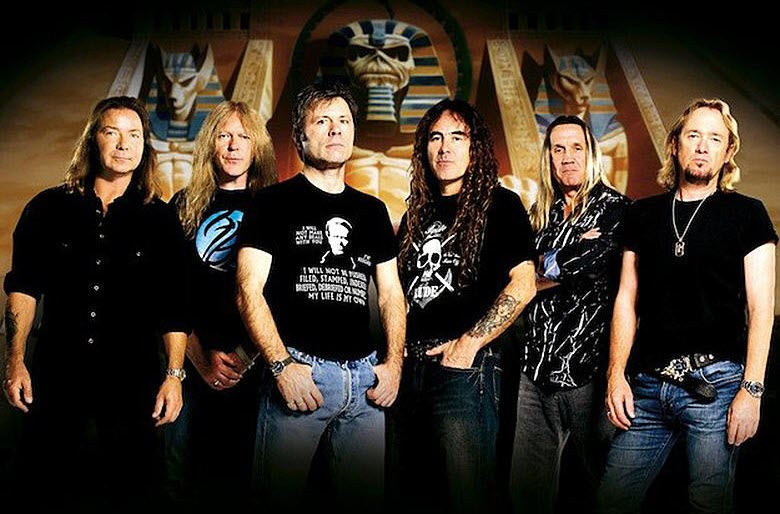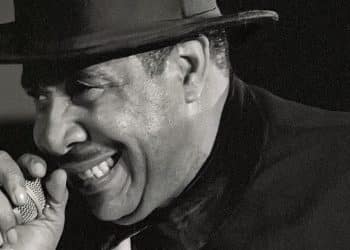Few bands in the history of heavy metal have achieved the legendary status of Iron Maiden. For over four decades, this British powerhouse has dominated the world of music with their electrifying guitar riffs, soaring vocals, and epic storytelling. From their humble beginnings in London’s underground metal scene to headlining massive arenas across the globe, Iron Maiden’s influence on heavy metal is nothing short of monumental. With a discography packed with unforgettable anthems and intricate compositions, fans continue to debate which of their songs reign supreme.
In this article, we’ll take you on a thrilling journey through Iron Maiden’s most iconic tracks—the songs that have defined their legacy and captured the hearts of millions. These are the anthems that have inspired mosh pits, ignited lighters in the air, and stood the test of time. Whether you’re a lifelong fan or a newcomer looking to explore their catalog, this list will showcase the very best of Maiden’s legendary sound. So grab your denim jacket, crank up the volume, and prepare to dive into the ultimate countdown of Iron Maiden’s top 10 most popular songs of all time—because this is heavy metal at its finest. Up the Irons!
1. The Trooper (1983)
Iron Maiden’s “The Trooper” is a high-octane anthem that epitomizes the band’s ability to tell gripping stories through powerful music. Released on their Piece of Mind album, this track takes inspiration from the tragic and heroic events of the Crimean War, particularly the Charge of the Light Brigade, as depicted in Alfred Lord Tennyson’s famous poem. The song captures the chaos and glory of battle through its galloping rhythm, driven by fast-paced guitar riffs and Bruce Dickinson’s piercing vocals. As the song’s lyrics paint a vivid image of soldiers charging into the fray, the music complements this with twin-guitar harmonies and an unforgettable bassline, which together create a sense of urgency and determination. The track’s mix of powerful energy and historical storytelling has made it a staple in Iron Maiden’s live shows, and it remains one of their most iconic songs. “The Trooper” is more than just a song about war; it is a testament to the resilience of the human spirit in the face of overwhelming odds. For fans, this track represents everything Iron Maiden stands for: intense musicality, fierce storytelling, and a deep connection to history.
2. Hallowed Be Thy Name (1982)
“Hallowed Be Thy Name” from Iron Maiden’s legendary The Number of the Beast album is a masterpiece of storytelling and musical complexity. The song takes the listener on a harrowing journey into the mind of a man who is facing execution. As the lyrics unfold, the condemned man grapples with profound existential questions and the fear of death, all while contemplating his impending fate. Bruce Dickinson’s emotive vocals heighten the song’s dramatic tension, while the band’s complex instrumentation underscores the emotional weight of the narrative. The song is known for its dynamic structure, shifting between quiet, reflective passages and intense, high-energy sections, creating a sense of dread and anticipation. The intricate guitar work and seamless tempo changes make it a standout, demonstrating the band’s technical prowess and their ability to combine storytelling with musical intricacy. “Hallowed Be Thy Name” has become a live show highlight, with fans eagerly awaiting its theatrical and emotional climaxes. With its blend of philosophical musings and heavy metal power, this song remains one of Iron Maiden’s defining tracks, elevating them to the status of not just musicians, but storytellers capable of capturing deep human emotion.
3. Run to the Hills (1982)
One of Iron Maiden’s most recognizable tracks, “Run to the Hills” from The Number of the Beast is both a powerful commentary on the effects of colonialism and a call to action in the face of injustice. The song’s vivid lyrics describe the displacement of Native American peoples during the expansion of European settlers in the Americas, painting a vivid picture of the violence and tragedy that unfolded. The soaring vocals of Bruce Dickinson and the thunderous choruses heighten the drama of the song, making it a protest anthem with an urgent, call-to-arms tone. Musically, the song features Iron Maiden’s signature fast-paced rhythms and guitar harmonies, which are perfect for conveying the intense emotion behind the message. The contrast between the soaring verses and the explosive choruses creates a tension that mirrors the struggle described in the lyrics. “Run to the Hills” is an emotionally charged song that connects historical events with the band’s signature energy and passion. This track has become a fan favorite for its raw power, and it continues to resonate with listeners as a potent reminder of the tragic consequences of colonialism.
4. Fear of the Dark (1992)
The title track of Iron Maiden’s 1992 album, “Fear of the Dark” has become one of the band’s most beloved and emotional anthems. The song explores the universal fear of being alone in the dark, capturing the feelings of anxiety and vulnerability that arise when confronted by the unknown. With its haunting melody and shifting tempos, the song builds an eerie atmosphere that gradually intensifies, reflecting the growing sense of dread that often accompanies this fear. Bruce Dickinson’s voice is soulful and haunting, conveying the raw emotion of the lyrics as he sings about the terrifying feeling of something lurking in the shadows. The music itself builds tension, with the guitars rising and falling, creating a dynamic sense of unease. “Fear of the Dark” transitions from slow, ominous sections to powerful climaxes, giving it a unique, cinematic quality that heightens the track’s emotional impact. The song has become a live staple, with audiences chanting along to the iconic chorus, cementing its place as a timeless anthem. More than just a song about fear, it taps into a deeply human experience, making it an enduring favorite among fans.
5. Aces High (1984)
Opening Iron Maiden’s Powerslave album with a bang, “Aces High” is an adrenaline-fueled tribute to the bravery and skill of World War II fighter pilots. The song’s rapid pace and soaring vocals by Bruce Dickinson immediately immerse listeners in the high-stakes intensity of aerial combat. With its relentless riffs and piercing guitar solos, the track captures the urgency and chaos of a dogfight in the skies. Lyrically, “Aces High” paints a vivid picture of a pilot’s determination to outmaneuver enemy forces, delivering an exciting narrative filled with dramatic tension. The song’s high-energy riffs and crisp drumming reflect the rapid, unpredictable nature of warfare in the air, making it a perfect fit for Iron Maiden’s electrifying style. The track is an anthem of heroism and adrenaline, and its fast tempo and frenetic energy have made it a favorite during live performances. The band’s passion for history is evident in this song, as they channel the courage and bravery of fighter pilots into a powerful rock anthem. “Aces High” remains one of Iron Maiden’s most iconic songs, celebrated for its unstoppable energy and its tribute to those who fought in the skies.
6. 2 Minutes to Midnight (1984)
2 Minutes to Midnight, from Iron Maiden’s Powerslave album, is a hard-hitting critique of war and the devastating consequences of nuclear weapons. With its blistering guitar riffs and intense rhythm section, the track serves as an urgent and powerful reminder of humanity’s precarious existence on the brink of annihilation. The title refers to the Doomsday Clock, symbolizing how close the world was to nuclear disaster, making the song’s message particularly relevant in the Cold War era. The lyrics confront the grim reality of conflict, describing the horrors of war and the destructive power of mankind. What makes the song particularly striking is its ability to combine political commentary with the band’s signature high-octane energy, ensuring the song resonates with listeners on multiple levels. Bruce Dickinson’s dynamic vocals range from thunderous to soulful, enhancing the emotional weight of the track. Musically, “2 Minutes to Midnight” is a masterpiece of heavy metal, with its unforgettable guitar harmonies and pounding basslines, keeping the listener on edge throughout. This track remains one of Iron Maiden’s most iconic and timeless songs, a passionate plea against the devastation of war and the threat of nuclear destruction.
7. Wasted Years (1986)
“Wasted Years” from Iron Maiden’s Somewhere in Time album marks a personal and introspective moment in the band’s catalog. Written by guitarist Adrian Smith, the song explores the themes of nostalgia, regret, and the longing for home that comes with life on the road. The track’s central message revolves around the idea of not wasting time and appreciating the present, despite the challenges that come with constantly touring and being away from loved ones. Musically, “Wasted Years” is melodic and uplifting, with its iconic opening guitar riff immediately grabbing the listener’s attention. The song’s thoughtful lyrics are complemented by a backdrop of driving beats and soaring guitar solos, creating a contrast between the track’s reflective mood and its up-tempo rhythm. The song’s message resonates deeply with fans, especially those who can relate to the feeling of wanting to reclaim time lost in pursuit of something bigger. As a live favorite, “Wasted Years” has become an anthem for embracing the present and cherishing the moments that truly matter. With its powerful riff and emotional core, it remains one of Iron Maiden’s most beloved tracks.
8. Number of the Beast (1982)
Number of the Beast, the title track from Iron Maiden’s groundbreaking The Number of the Beast album, remains one of the most iconic songs in heavy metal history. Inspired by a vivid nightmare bassist Steve Harris had after watching Damien: Omen II, the song combines satanic imagery with themes of rebellion, fear, and superstition. The song’s eerie opening, with its haunting voiceover, builds to a furious riff that sets the stage for a track that never lets up. With its explosive energy, the song captures the fear and fascination that the concept of the “number of the beast” has held for centuries, playing on the mystique of the supernatural. Bruce Dickinson’s vocals deliver the chilling lyrics with a sense of urgency and passion, while the band’s musicianship shines through in its dynamic tempo changes and iconic twin-guitar harmonies. “Number of the Beast” became an instant classic and cemented Iron Maiden as a dominant force in heavy metal, both for its bold thematic exploration and its musical prowess. The song’s enduring popularity is a testament to its cultural impact and the band’s ability to push the boundaries of the genre.
9. Phantom of the Opera (1980)
Iron Maiden’s debut album introduces listeners to “Phantom of the Opera”, a sprawling and ambitious piece that showcases the band’s early progressive tendencies and musical versatility. Running over 7 minutes, the song features intricate tempo changes, dynamic shifts, and technical guitar work, setting it apart from the more straightforward tracks of the time. Drawing inspiration from Gaston Leroux’s classic novel, the song is a dramatic retelling of the tragic love story between the phantom and Christine. The band’s performance is captivating, with multiple sections that build tension, break, and then rise again to a grand climax. Bruce Dickinson’s powerful and dramatic vocals serve as a perfect match for the theatrical nature of the lyrics, creating a compelling atmosphere that immerses the listener in the phantom’s world. The intricate guitar harmonies and technical drumming of Nicko McBrain further elevate the song’s complexity, making it a stunning example of the band’s early musical ambition. While Iron Maiden would continue to refine and expand upon this progressive style in later years, “Phantom of the Opera” remains a highlight of their debut, showing that from the very start, they were masters of storytelling and musicianship.
10. Can I Play with Madness (1988)
Can I Play with Madness, from Iron Maiden’s Seventh Son of a Seventh Son album, blends playful energy with deep philosophical introspection. The song’s catchy chorus and punchy guitar riffs make it one of the band’s more accessible tracks, but beneath the surface, it grapples with themes of destiny, madness, and self-discovery. Lyrically, the song presents a narrative of a man seeking meaning in a world filled with confusion, asking whether he can “play with madness” and break free from the constraints of society. The energetic instrumentation adds a layer of excitement, contrasting with the introspective lyrics and giving the song a unique balance of light-heartedness and depth. Bruce Dickinson’s vocals are full of dynamic range, shifting from playful to powerful as the song progresses. The pounding drums and infectious guitar lines give the track an undeniable catchiness that made it a hit on the charts. While Iron Maiden is often known for their heavy themes and epic storytelling, “Can I Play with Madness” showcases the band’s ability to mix fun with meaning, making it a standout track on the album and a favorite among fans.







